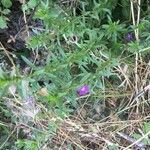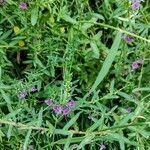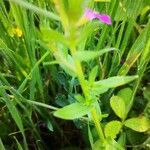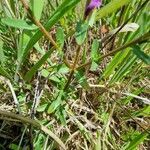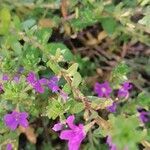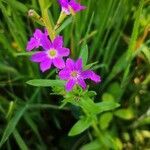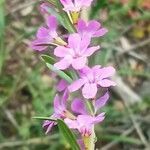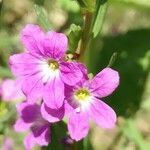Perennial herb, decumbent to ascending, glabrous. Stems stoloniferous, to 1 m long. Leaves mostly alternate, sometimes some opposite, sessile or subsessile, linear or oblong or elliptic, 0.7–3 cm long, obtuse to acute, the base rounded to slightly auriculate. Flowers solitary in upper leaf axils; pedicel 1–2 mm long. Hypanthium cylindrical-obconical, 4.5–7 mm deep, c. 1.5 mm wide; appendages 5 or 6, triangular, 0.5–1 mm long. Sepals 5 or 6, deltate, 0.5–1 mm long, c. equal to sepals. Petals 5 or 6, spreading, obovate, 4–6 mm long, pink to purple. Stamens 10–12, dimorphic with 5 or 6 exserted by 1–2 mm. Capsule ovoid, shorter than hypanthium.
